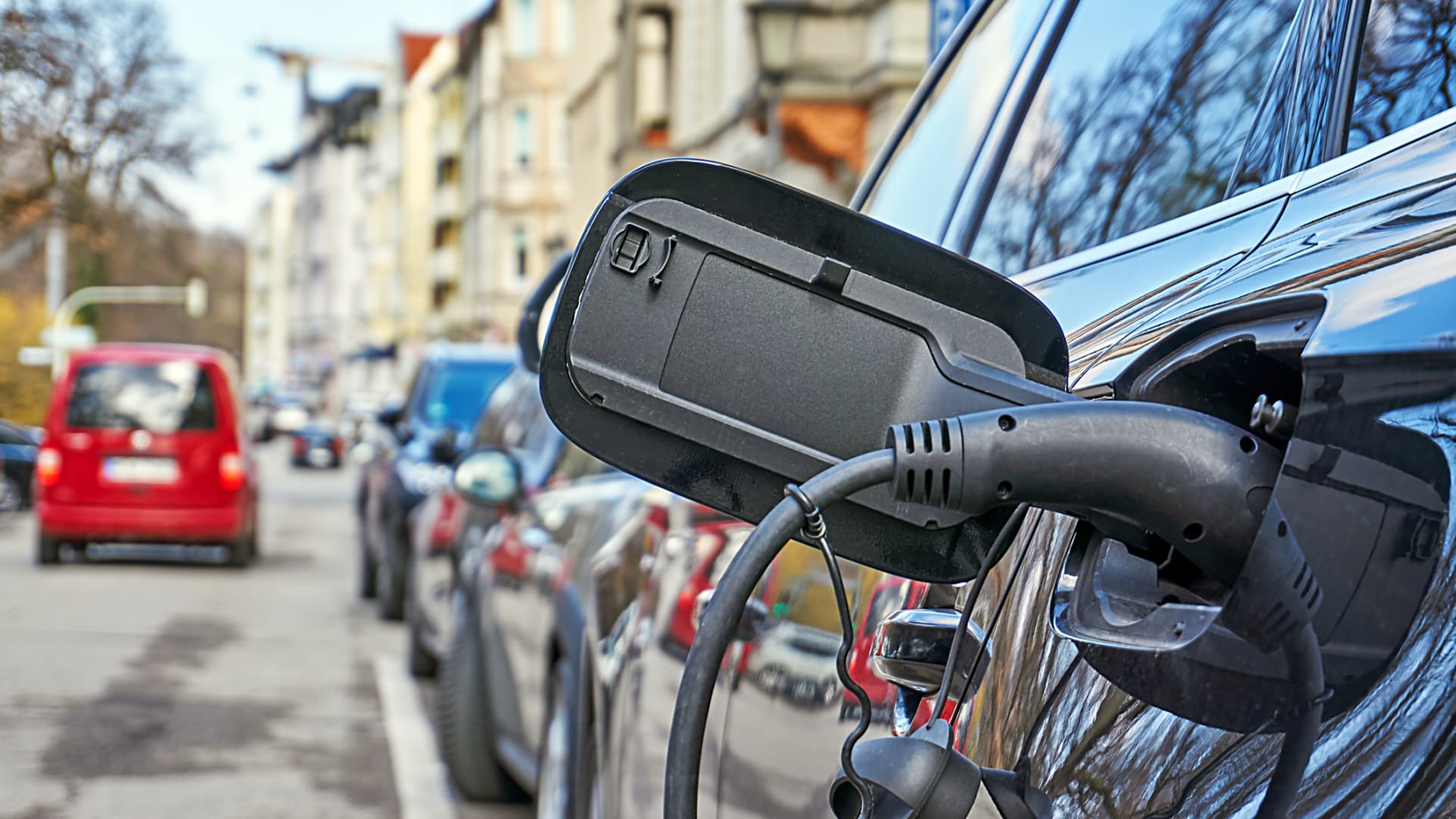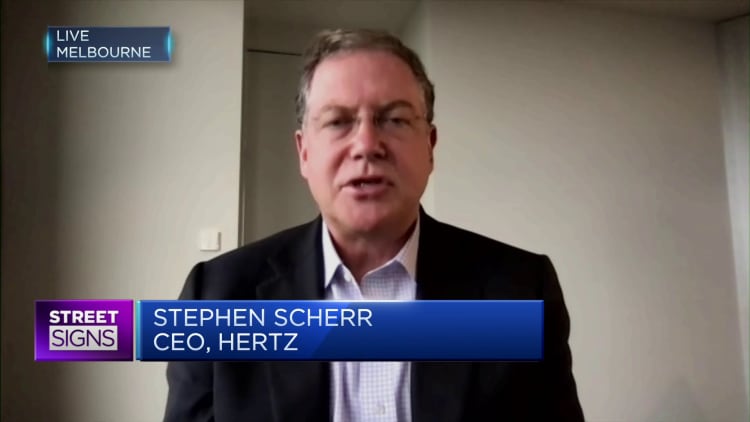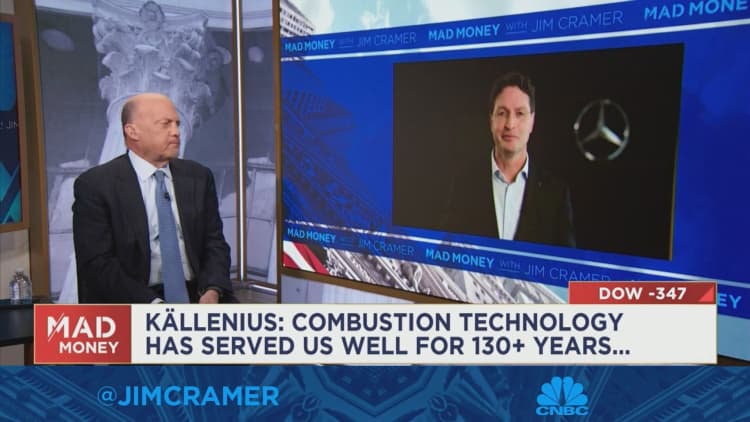
Tomekbudujedomek | Moment | Getty Images
The historic climate legislation President Joe Biden signed in August offered a federal tax break — worth up to $7,500 — to households that buy new electric vehicles.
But it may be tough for consumers to get the full value of the tax credit — at least initially.
That’s largely due to the structure of the clean vehicle credit and certain requirements for consumers and car manufacturers. Those roadblocks, however, are poised to ease in the longer term, experts said.
The tax credit ‘bummer’: It’s nonrefundable
The legislation, called the Inflation Reduction Act, made the tax credit “nonrefundable.”
That means consumers can only get the full financial benefit if they have a federal tax liability of at least $7,500. A nonrefundable credit offsets a consumer’s federal tax bill but any leftover value is lost.
Let’s say a consumer buys an electric vehicle today. When filing their 2022 tax return, the person finds they owe $5,000 in federal taxes. This person wouldn’t get the full $7,500 tax credit — they’d be able to claim $5,000 and cut their tax bill to zero. But the remaining $2,500 would be lost. In other words, those funds wouldn’t be issued to the consumer in a tax refund.
In addition, unlike some other tax credits in the bill — such as the “residential clean energy” credit for home solar panels and other installations — any unused value doesn’t carry over to future tax years to offset a future tax bill.
More from Personal Finance:
Missed a tax credit from last year? You can claim it until Nov. 15
These colleges promise no student debt
What to look for in a credit report to lower your borrowing costs
“That’s kind of the bummer” of the credit, said Dan Herron, a certified public accountant and certified financial planner based in San Luis Obispo, California.
High-income consumers would generally be most likely to benefit from the full credit value relative to those with more modest earnings, since they typically have larger tax bills, Herron said. But the credit comes with some additional restrictions — such as an income cap, explained in more detail below — that will restrict how many of those households can benefit.
Meanwhile, middle- and lower-income buyers typically have smaller tax bills, meaning it’s more likely they wouldn’t collect the full credit, Herron said.
States, municipalities and utilities may also offer financial incentives for electric vehicle purchases.
How to tinker with your tax bill
Consumers who want to buy an electric vehicle and think their tax bills will be too small to get the full $7,500 can take steps to boost their tax liability — and therefore maximize the credit’s value.
For example, investors can consider converting a pretax retirement account to a Roth, a type of after-tax account; they’d owe income tax on that conversion. Investors can also consider selling winning stocks or other assets, thereby incurring capital gains tax.

“If you can harvest some gains or have additional income you can pull into 2022, maybe you consider that,” Herron said.
Workers can also adjust the tax withholding on their paychecks, opting to withhold less and thereby increasing the taxes they owe.
However, Herron doesn’t recommend this route due to potential unknowns. For example, an unexpected bonus during the year might mean a larger-than-expected annual tax bill, depending on the withholding adjustment.
Parameters that may reduce the credit
Sinology | Moment | Getty Images
Aside from the tax credit’s structure, the Inflation Reduction Act set requirements around the new clean vehicles themselves that may limit the value of your tax break.
As of Aug. 16, when Biden signed the Inflation Reduction Act, final assembly of the car must occur in North America to qualify for a tax break. The U.S. Department of Energy has a list of vehicles that meet this standard.
Additional rules take effect in 2023.
First, there are income caps. A tax credit isn’t available to single individuals with modified adjusted gross income of $150,000. The cap is higher for others — $225,000 for heads of household and $300,000 for married couples who file a joint tax return. (The test applies to income for the current or prior year, whichever is less.)
And certain cars may not qualify based on price. Sedans with a retail price of more than $55,000 aren’t eligible, nor are vans, SUVs or trucks over $80,000.
There’s a lot of uncertainty.
Joel Levin
executive director of Plug In America
Two other rules apply to manufacturing: One carries requirements for sourcing of the car battery’s critical minerals; the second requires a share of battery components be manufactured and assembled in North America. Consumers lose half the tax credit’s value — up to $3,750 — if one of those requirements isn’t met; they’d lose the full $7,500 for failing to meet both.
It’s unclear which electric vehicles will meet these standards and qualify for a tax credit next year. There’s a chance none may immediately qualify, according to the Alliance for Automotive Innovation.
“There’s a lot of uncertainty,” said Joel Levin, executive director of Plug In America.
“If you need a car, I think it’s risky to delay buying in hopes of getting the credit,” he added. “It may not work out or it may be a couple years until it’s eligible.”

One other consideration: Consumers who buy a Tesla or General Motors model before the tighter rules kick in Jan. 1 aren’t eligible for a tax break based on earlier parameters around sales caps that are set to lapse at the end of the year.
There’s also another option: buying a used EV instead of new one.
The Inflation Reduction Act created a “credit for previously owned clean vehicles” worth up to $4,000 starting in 2023. The tax break comes with some restrictions (like a $25,000 cap on the car’s sticker price and lower income caps for consumers) but doesn’t carry the manufacturing and assembly requirements of new cars.
A more consumer-friendly option
Consumers who are willing to wait until 2024 to buy a new or used car — and get the associated tax break — will have the most consumer-friendly option at their disposal, experts said.
That’s because the climate law will then allow a buyer to transfer their tax credit to the car dealer. A dealer — which must register with the U.S. Department of the Treasury — would get an advance payment of the consumer’s tax credit from the federal government.
As a result, consumers can likely receive the full tax credit at the point of sale from the car dealer as a discount on the sticker price or a reduction in the vehicle’s down payment, Levin said. And they’ll get that discount even if they don’t have a tax liability, he added.
“It makes the credit much more valuable to people, especially people who are of moderate income and don’t have a lot of money sitting in their pockets for the down payment,” Levin said.





